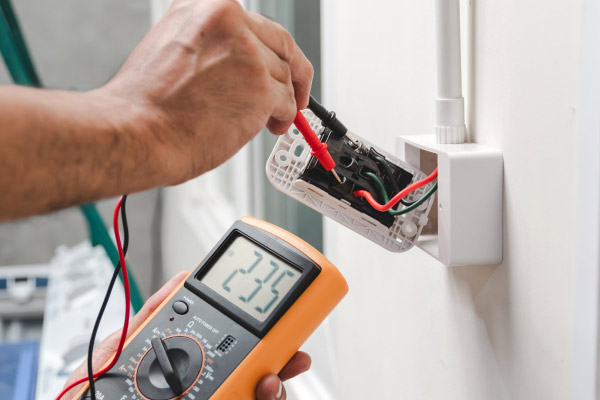What Are Low Voltage Systems?
Electricians can perform work on several different systems within a home or building. While we’re all familiar with the regular electrical utility and its services, a set of lesser-known systems is just as important to building or home operation: low voltage electrical systems.
What is low voltage in construction?
Low voltage electrical service delivers electricity with 50 volts or less. These systems require less power than standard appliances, making them safer to install and costing owners less money to operate.
Low voltage systems include data/audio/video, telephone, access systems, fire alarm, security, doorbells, garage door openers, internet, HVAC controls and thermostats, and some light fixtures.
What are the types of low voltage cabling?
There are five types of low voltage cabling: twisted pair, fiber optic, speaker, thermostat, and coaxial.
As the name suggests, twisted pair cables are comprised of two insulated wires that are twisted around each other, and they are most commonly used to transmit data. The most common wires of this type are Cat 5, 6, and 6a.
Fiber optic cable contains strands of glass fibers inside an insulated casing and is used to transmit power over long distances.
Speaker wire is used to transmit sound throughout a building or home.
Thermostat wire is used to send signals back and forth from the HVAC thermostat to the equipment.
Coaxial cables contain a single wire surrounded by an insulating material and a metal shield and are used to transmit video and radio signals.
Low voltage cabling is laid out in a system called structured cabling. The system is separate from the regular electrical wiring system. Because there is less danger of shock and fire with low voltage cabling, the codes and regulations around its installation are more flexible. For example, in most jurisdictions low voltage wiring doesn’t have to be run through conduit. This makes installation quicker and reduces the cost of these systems.
What are the benefits of using low voltage cabling in new construction?
Lower cost – Low voltage systems are generally less expensive to install than regular electrical systems. They also take less time to install, helping with project budget and schedule.
Safer – The lower voltage makes these systems safer for workers to install, as there is very little risk of shock. In addition, there is less fire danger.
Versatility – A wide variety of systems and equipment can be powered by low voltage systems. This means fewer wire types are required, simplifying installation.
How do you choose the right low voltage cabling for your new construction project?
The key to choosing the right cabling is knowing your wire types and ensuring that you’re using the best one for the application.
The National Electrical Code (NEC) rates cables so you’ll know when and where each type can be used. It also states which cables are appropriate for specific applications, including remote control, signaling, fire alarm systems, communications, TV and radio systems, and more.
Make sure you’re installing the cable in the right type of space. Plenum-rated cable is constructed so it can be used in ducts or environmental air spaces. Riser-rated cable is used to run up multiple floors. General purpose cable can be installed in either conduit or raceways over a single floor.
Ensure that you are using cable with the correct frequency. Cat 5e cable has a standard frequency of 100 megahertz (MHz), cat 6 has a standard frequency of 250 MHz, and cat 6a has a standard frequency of 500 MHz.
To sum up, the integration of low voltage systems in construction has become an integral aspect of modern building projects. As we’ve explored the significance of low voltage in construction and the intricate nature of low voltage wiring in new construction, it’s evident that these systems play a pivotal role in enhancing safety, efficiency, and overall functionality within buildings. The advancements in low voltage technologies not only meet the increasing demands for smart and sustainable buildings but also contribute to a streamlined and interconnected infrastructure. Embracing low voltage solutions in construction is not just a trend but a strategic move towards constructing safer, more energy-efficient, and technologically sophisticated buildings that meet the evolving needs of the contemporary world.


